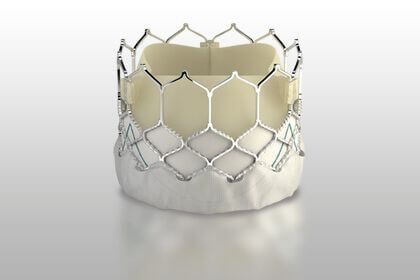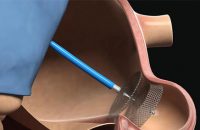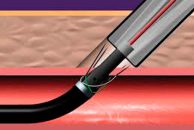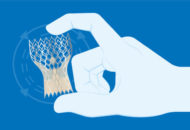The US Food and Drug Administration (FDA) has cleared the SAPIEN 3 valve with the Alterra adaptive pre-stent for implantation in pulmonary position. According to Edwards Lifesciences, this new system developed for pulmonary valve is capable of compensating a wide variety of sizes and morphologies of the right ventricular outflow tract, allowing for stable valve implantation.…
The Most Relevant of 2021 In Structural Heart Disease
This last year, new data in structural heart disease gave way to changes in practices and new hypotheses, when not simply further justified the already existing evidence. In this new editorial section, we share the most relevant of last year’s works to keep you up to speed on the main topics in the field. The…
PRAGUE-17: Appendage Closure vs. Direct Anticoagulant Agents
After four years of follow-up, the PRAGUE-17 study showed that appendage closure is non-inferior to direct anticoagulant agents (non-warfarin oral anticoagulants, NOAC) to prevent major neurological events, cardiovascular events, and bleeding events in patients at high risk of atrial fibrillation. Appendage studies were compared with warfarin studies—it was necessary to update anticoagulant agents and reach…
CHOICE-CLOSURE | Which Closure Device for TAVR is Better?
In patients who undergo transcatheter aortic valve replacement (TAVR) through transfemoral access, a closure device based on plug technology (MANTA VCD) is associated with a higher chance of access-related complications, but with shorter hemostasis time compared with a device with suture technology such as ProGlide VCD. Nowadays, most patients undergo TAVR through transfemoral access. Percutaneous…
Prosthesis-Annular Size Ratio and Its Impact on Leaks
In low-risk patients, there was a very low incidence of greater than moderate leak, including in patients with minimal oversizing. The degree of prosthesis oversizing had a great impact on mild paravalvular leak reduction and the need for post-dilation without changing valve hemodynamics. This research investigated the impact of the perimeter and the area, measured…
Ten Commandments for 2021 Guidelines on Valvular Heart Disease
Since the latest version to the Valvular Heart Disease Guidelines from the European Society of Cardiology, plenty of evidence has been accumulating, finally leading to this updated version. In this regard, below you will find what has been called “10 commandments” that sum up this new document, to keep you in the loop. The incidence…
AHA 2021 | AVATAR: Early Intervention in Asymptomatic Aortic Stenosis
Early surgical aortic valve replacement (SAVR) in patients with severe asymptomatic aortic stenosis can be beneficial in selected patients vs. waiting for symptoms. Severe AS in patients with no symptoms and conserved ventricular function raises few questions, clinically speaking. However, there is little evidence in favor of early intervention vs. close observation. The best data…
TAVR vs Sutureless Surgical Aortic Valve Replacement in Low-Risk Patients
Sutureless surgical aortic valve replacement (SU-SAVR) has been designed to make surgical valve replacement easier and faster, especially compared against conventional biological valves which require multiple sutures; their rapid deployment translates into reduced cross-clamp and operative time. These valves shorten operating time and are less invasive than conventional surgical valves. Except for sternotomy incisions, they…
TCT 2021 | SURTAVI: Good News for the Self-Expandable Valve at 5 Years
After a 5-year followup, the transcatheter aortic replacement (TAVR) with the self-expandable valve has offered clinical outcomes similar to surgical aortic valve replacement (SAVR) outcomes for intermediate risk patients. As we already knew form the 2-year followup, the all-cause or disabling stroke rate at 5 years between TAVR and SAVR continued to be similar (31.3%…
Is Troponin Elevation After TAVR Related to Mortality?
Troponins have long had diagnostic value not only for infarction. Their ability to predict mortality is well established for all cardiac conditions. Moreover, it has been demonstrated in all critically ill patients, including patients with COVID-19, regardless of the triggering condition. While their significance in COVID cases is backed by the literature, there was not…
Fluoroscopy vs. Ultrasound Guided Femoral Access in TAVR
Ideally, we will not puncture the femoral artery blindly if we are planning to use a big caliber releasing device and a percutaneous closure device during TAVR. The risk of a high or low puncture or the presence of a lateral branch compromising the puncture site might become a major vascular and bleeding complication. There…









